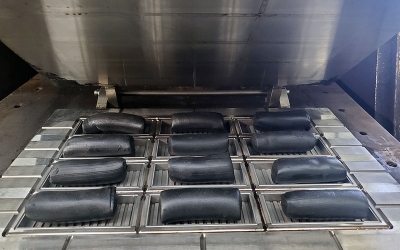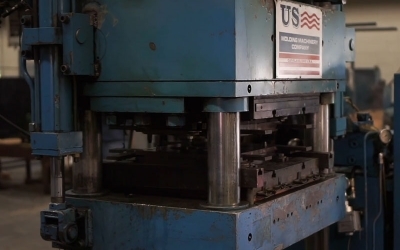What is Natural Rubber? Properties, Applications & More

What is Natural Rubber?
Natural rubber can be defined as the latex polymers harvested from natural sources such as the hevea brasiliensis tree or over 2,500 other variants of trees and plants and subsequently processed with chemical additives and heat treatment process to produce rubber.
There are many types of rubber, but they can all be simplified into two categories: natural rubber and synthetic rubber. The vast majority of natural rubber production comes from the hevea tree, also known as the Pará rubber tree or simply the rubber tree. Native to the Amazon and other forested areas of South America, this source of natural rubber has been used since the 1800s. Over time, as demand for rubber grew, and as applications and requirements became more complex, synthetic rubbers were developed to supplement the availability of natural rubber. Despite the introduction and increased popularity of specialized synthetic rubbers, natural rubber remains a commonly used material across many industries and applications. This is due to its durability, low cost, and resistance to ozone, sunlight, water, and various other chemicals.
Properties of Natural Rubber
The many advantages of natural rubber make it a common choice for various applications. As with any other type of rubber, there are some disadvantages to natural rubber. The video below discusses the previously mentioned harvesting of latex polymers from the hevea tree, the advantages and disadvantages of natural rubber, and the common applications of this material for several industries. We hope that this succinct explanation of natural rubber from the President and Owner of Lake Erie Rubber, Jon Meighan, helps potential customers understand if this specific variant is the appropriate material for their end applications.
You can visit our YouTube Channel to view additional videos that cover the various other rubbers we offer, the different molding processes, and take a virtual tour of our Erie, PA facility.
Natural Rubber Advantages
As outlined in the video, natural rubber has many inherent advantages and application-specific benefits utilized by several industries. Natural rubber is exceptionally durable with enhanced resistance to abrasion and vibration dampening properties. Its impressive tensile strength and capacity for elongation during use make it an extremely tough and resilient material. Natural rubber also has a wide temperature operating range and is resistant to cold temperatures. It can withstand temperatures as low as -50°F(-46°C).
Beyond this, Jon Meighan also notes, “The other really great use for natural rubber is when you have a dynamic application where you might have fatigue cycling over time. So, if you know this material is going to flex over and over, natural rubber can be a really great choice for those types of applications.”
Some of these dynamic applications that utilize the compressive set of natural rubber include anti-vibration mounts, bumpers, dog toys, bushings, and more. It does offer limited resistance to sunlight, weather, oils, gasoline, greases, solvents, petroleum oils, animal and vegetable oils, silicone oil, refrigerants, ammonia, carbon dioxide, water, and steam. However, some synthetic rubber materials may be better suited for certain types of exposure due to their chemical makeup or production methods.
Natural Rubber Disadvantages
Like any other polymer, natural rubber has some disadvantages as well. Meighan states that one major disadvantage of natural rubber is that, “it does not have the best heat resistance and is also attacked by ozone because of the presence of the double bonds on the backbone of the polymer.” The reaction between ozone and natural rubber occurs within the molecular structure of the material and can lead to surface cracking and a noticeable decrease in tensile strength.
While natural rubber is a viable material for a wide range of temperatures, it does not have very strong heat resistance and is only able to withstand temperatures as high as 180° F (82° C). Over time, when it is exposed to chemical stressors such as the aforementioned ozone or oil-based liquids, it will degrade and have a reduction in tensile strength, elongation, and other physical properties. Lastly, while the cost is often low, the price of natural rubber can fluctuate more than many other elastomers due to the collection and manufacturing process.
Natural Rubber Applications
Natural rubber is one of the most frequently used rubbers, with many applications across a range of industries. Common applications are refrigeration seals, air conditioning units or Freon-based cooling systems, motor mounts, engine coolants, petroleum and chemical tank linings, automotive gaskets and seals, anti-vibration mounts, and weather stripping. Other common applications of natural rubber include:
- Automotive: Natural rubber is used together with synthetic polymers in tires for cars, buses, and even airplanes. Its durability and abrasion resistance are the main qualities that help improve the longevity of tires. This material is also used in the manufacturing process for other automotive parts, such as brake pads, airbags, and window seals.
- Dog toys: Natural rubber is a great choice for chew toys both because it is non-toxic, which is important in case it is ingested, and because it is incredibly abrasion resistant, meaning it can last a long time despite constantly being chewed on.
- Clothing: Although not the first material that comes to mind, natural rubber is highly desirable in athletic clothing, such as shorts and wetsuits, in the form of elastic, due to its elongation properties.
- Flooring: Many commercial venues and public spaces, such as gyms, commercial kitchens, and playgrounds, use rubber flooring due to its durability. Natural rubber can last a long time even in areas experiencing considerable traffic or use, while also providing a surface that is easy to clean and maintain.
Contact Us For Natural Rubber Quotes
Natural rubber, harvested and processed since the early 1800s, is still one of the most commonly used polymers across many industries. The inherent advantages of natural rubber make it a suitable material for countless manufacturers where it outperforms synthetic rubber alternatives. Since 1961, Lake Erie Rubber has offered premium quality products with a focus on excellent customer service and relationship building. If you are considering natural rubber for your next project, please contact us to share more information or receive a quote!


